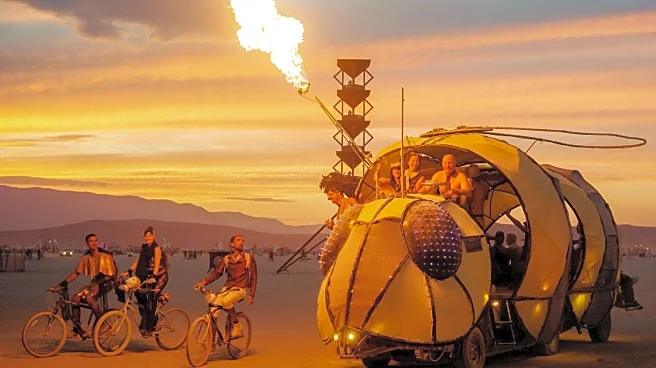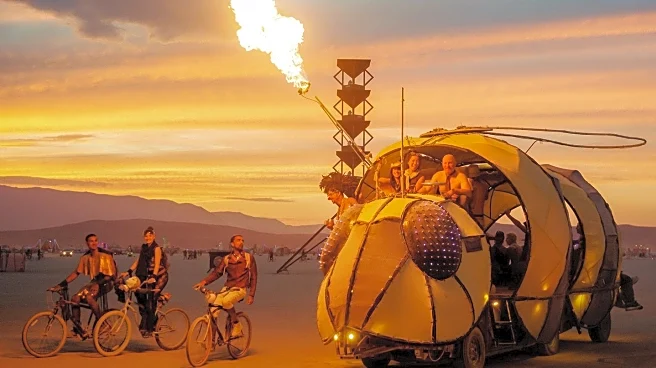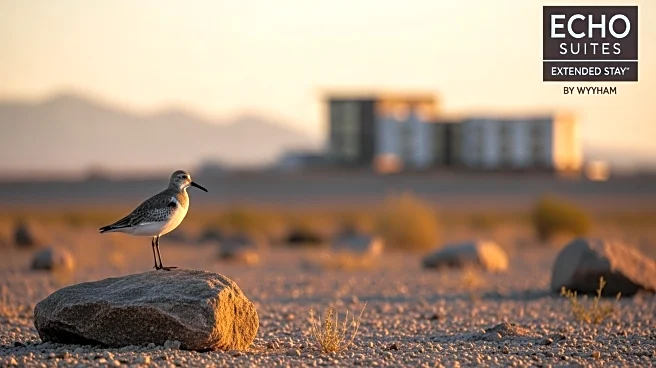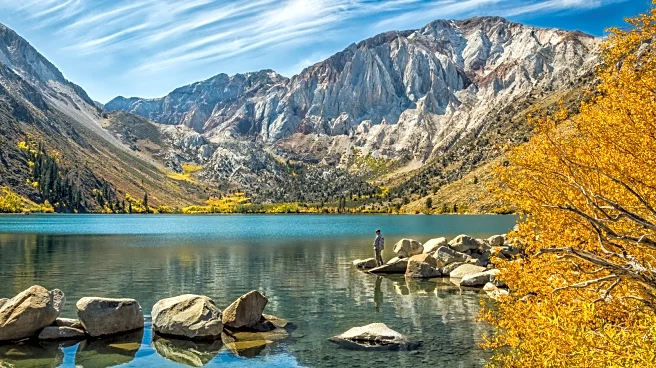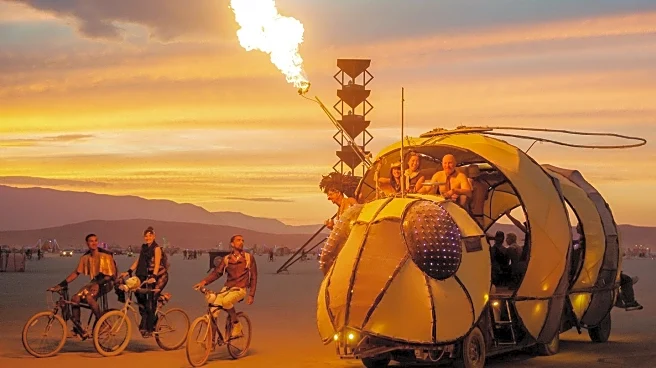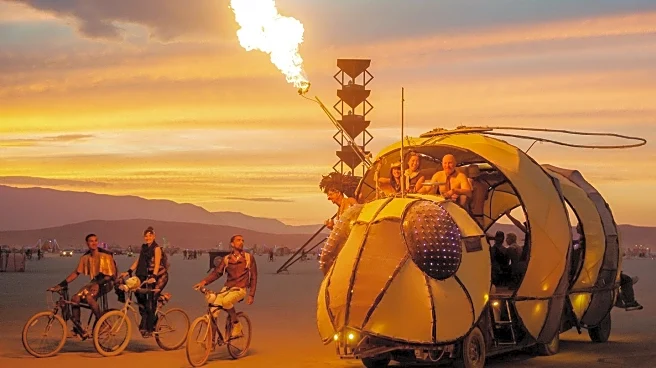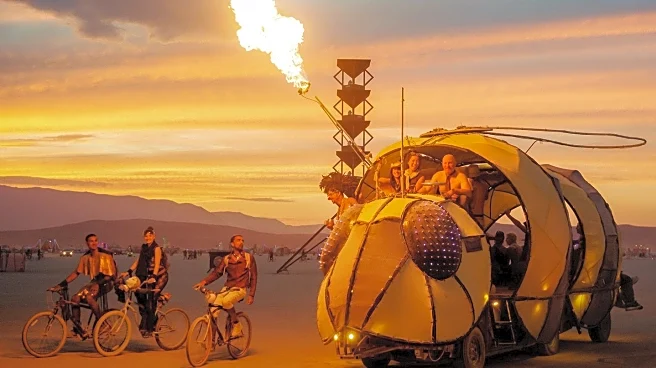Rapid Read • 8 min read
Rachael Gingery, a San Francisco resident, is preparing to attend Burning Man for the ninth time, despite a severe accident at the event last year. In 2024, Gingery fell approximately 20 feet from a climbable art installation named 'Naga & the Captainess,' resulting in a fractured spine, cracked rib, and bruised spleen and lung. She spent 16 hours in the event's makeshift field hospital before being transported to Reno for further medical treatment. Despite the risks, Gingery finds the inherent dangers of Burning Man exciting. The event, held annually in Nevada's Black Rock Desert, attracts over 70,000 participants for nine days of art, music, and self-expression. However, it also poses significant hazards, including extreme temperatures, dehydration, substance use, and interactive installations that can lead to injuries.
AD
The incident highlights the potential dangers associated with large-scale events like Burning Man, where participants face environmental and physical risks. The event's organizers emphasize participant safety, providing on-site medical facilities staffed by professionals. However, serious injuries can lead to substantial medical costs, as evidenced by attendees seeking financial assistance for hospital bills. Despite these challenges, the allure of Burning Man remains strong, drawing thousands of people annually. The event's ability to attract participants despite known risks underscores its cultural significance and the appeal of its unique environment.
As Burning Man continues, organizers may face increased scrutiny regarding participant safety and the adequacy of medical facilities. The event's inherent risks could prompt discussions about improving safety measures or revising liability waivers. Participants, aware of the dangers, might advocate for enhanced safety protocols or better access to medical care. The ongoing popularity of Burning Man suggests that while risks are acknowledged, they are unlikely to deter attendance. Future events may see increased efforts to balance the excitement of radical self-expression with the need for safety.
The incident raises questions about the ethical responsibilities of event organizers in ensuring participant safety. It also highlights the cultural phenomenon of Burning Man, where the thrill of risk-taking is part of the experience. The event's unique environment fosters a sense of community and self-reliance, but also necessitates careful consideration of safety practices. As Burning Man evolves, it may influence broader discussions on the balance between freedom and safety at large-scale gatherings.
AD
More Stories You Might Enjoy
